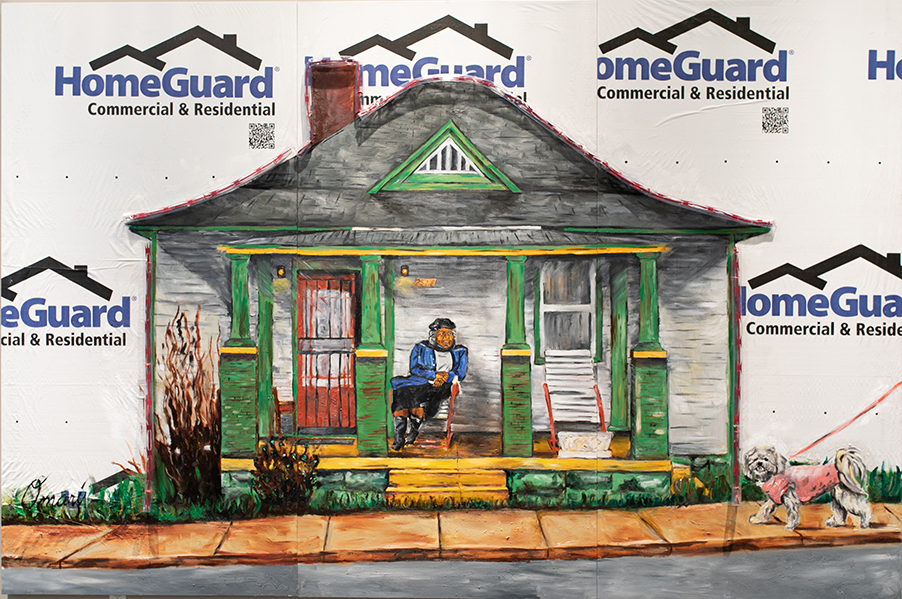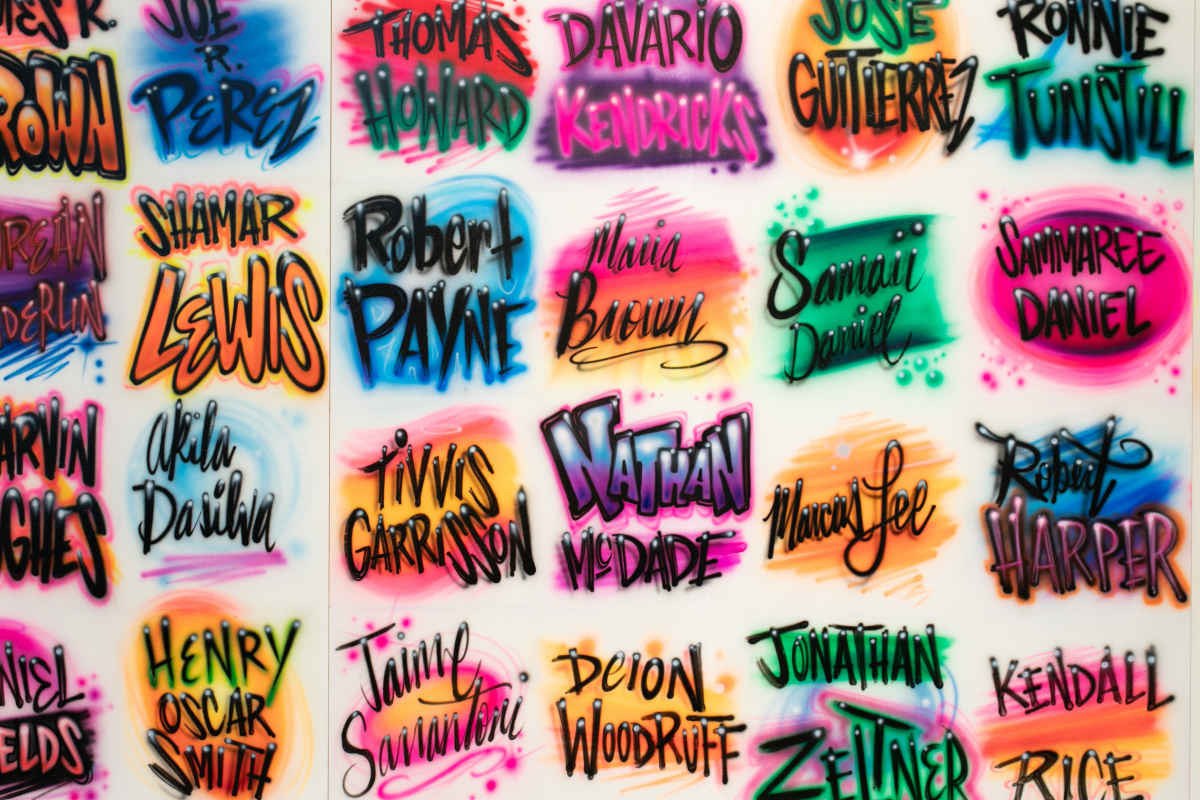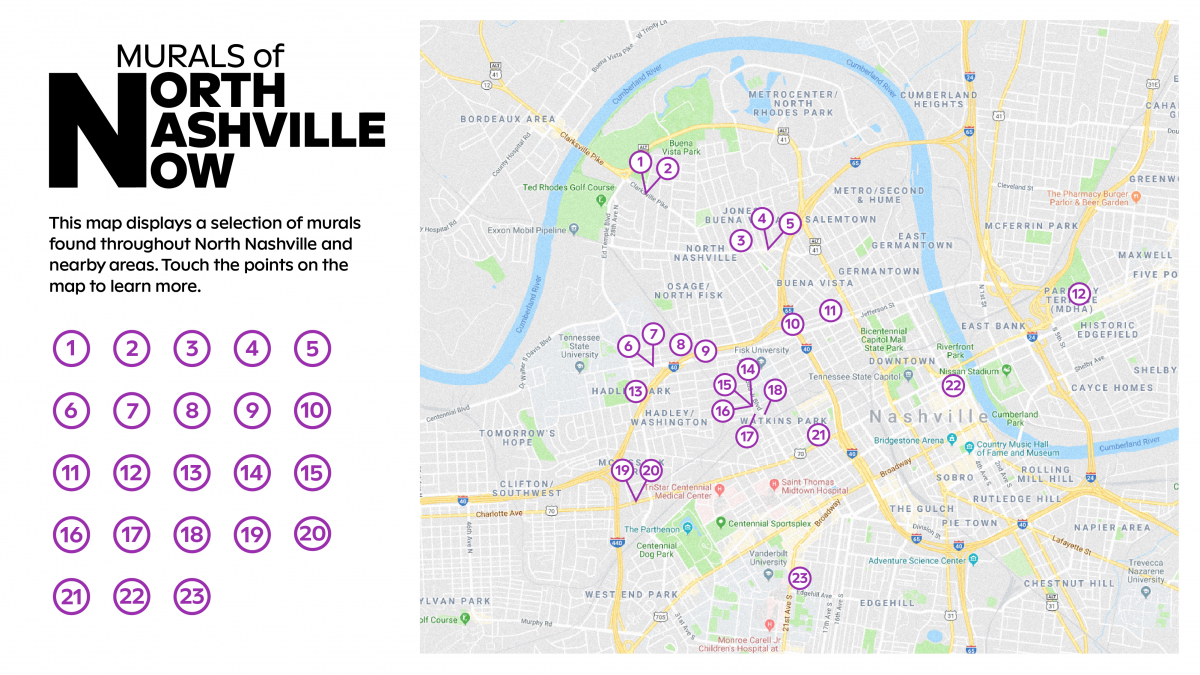
The Frist Art Museum in Nashville does two things remarkably well. Like other capitol city museums throughout the United States, they present fully resolved, educational exhibitions filled with extraordinary works of art supported by thoughtful text and labeling. Most recently, the exhibition, Monsters & Myths: Surrealism and War in the 1930s and 1940, which features works borrowed largely from two prestigious institutions; The Baltimore Museum of Art and The Wadsworth Atheneum Museum of Art, offered a great number of iconic works such as the mesmerizing Europe After the Rain II (1940-42) by Max Ernst. In addition to this, the Frist offers a very special form of community outreach in their programming that speaks directly to the citizens of Nashville, giving a much needed public forum to those with perpetual urgent concerns. One of their current exhibitions, Murals of North Nashville, which closes January 5, 2020, is a strikingly energetic and social-political collection of murals created by local artists. Each participant has, in some very personal way, a deep connection to North Nashville's African American neighborhoods -- areas that are in the midst of great change due to encroaching gentrification. Curated by The Frist's own Katie Delmez, this exhibition sheds much needed light on "both the persistent problems such as displacement, gun violence, and incarceration, as well as positive elements like thriving black-owned businesses, a revitalized art scene, and valued educational institutions."
All nine of the 8 x 12 foot works for the Murals of North Nashville exhibition are installed in the Conte Community Arts Gallery. This is a very important feature of the Frist, since this space in the museum is accessible to all visitors, as it has no entry fee. All of the installed works have very powerful messaging ranging from violence and despair to hopeful progress. Omari Booker's The Writing's on the Walls (above), features a woman in a rocking chair on the front porch of what looks to be a home built during the Arts and Crafts era. The house, which has its outline overtly defined with red razor wire, refers to "redlining," a process used by certain institutions, primarily in the financial and real estate fields, in order to separate out minority neighborhoods for the sole purpose of perpetuating their economic woes. The subsequent encroaching gentrification takes up the entire background of this work, as it is covered with newly placed construction materials, while the somewhat less obvious pink-vest-wearing upscale pooch enters the picture plane from the bottom right corner, a detail that is contrasted by the fiery shaped, dying bushes in front of the porch on the left side of the house. This more than metaphorical battle between the underrepresented and oppressed, and the more privileged "protagonists" in this never-ending drama speaks volumes of the inequities based on wealth, which brings political and private access, and race.

Brandon Donahue's Rest in Peace lists all the names, in various styles of eye-catching graffiti, of all the individuals struck down by guns in North Nashville. What first appears as a joyful and celebratory list of local names ends up leaving viewers with a strong feeling of loss and thoughts of what could have been. Conversely, hope and change comes in the form of energetic children and strong women. Elisheba Israel Mrozik's Unmask 'Em shows the power of women who will lead the way, being best equipped to overcome the many sides of suffering built upon the unfortunate truth that justice is not blind. The central figure in the composition, which is a cross between the Madonna and Child and the Pietá, has an otherworldly feel, while the corruption that surrounds is about to be uncovered by righteous disciples. In the end, there is a path to the Promised Land, once the spoilers of future fairness are eradicated.
Forever, created by the Norf Art Collective, also holds quite a bit of promise, as it features children who will continue the work of all those who have come before, aided by greater opportunity and better education leading to the promise in true equality. The dominating figure, a girl in a yellow dress, runs through the composition as she leaves her tag in ecru paint across a world of blue chiaroscuro painting that clearly defines her path to happiness and success. LeXander Bryant's Opportunity Co$t is a six-stationed stream of powerful graphics and unifying text in red, black and yellow -- all making one think of revolution at first. Only this time, the revolution is about progressive, positive change for people of color; community outreach for all, and the kept promise of a sustainable and sustaining jobs. Additional works by XPayne, Nuveen Barwari, Marlos E'-van and Courtney Adair Johnson round off this field of powerful and compelling murals at the Frist, while other public sites can be found with the exhibition's accompanying map, which locates numerous outdoor wall paintings throughout North Nashville.

